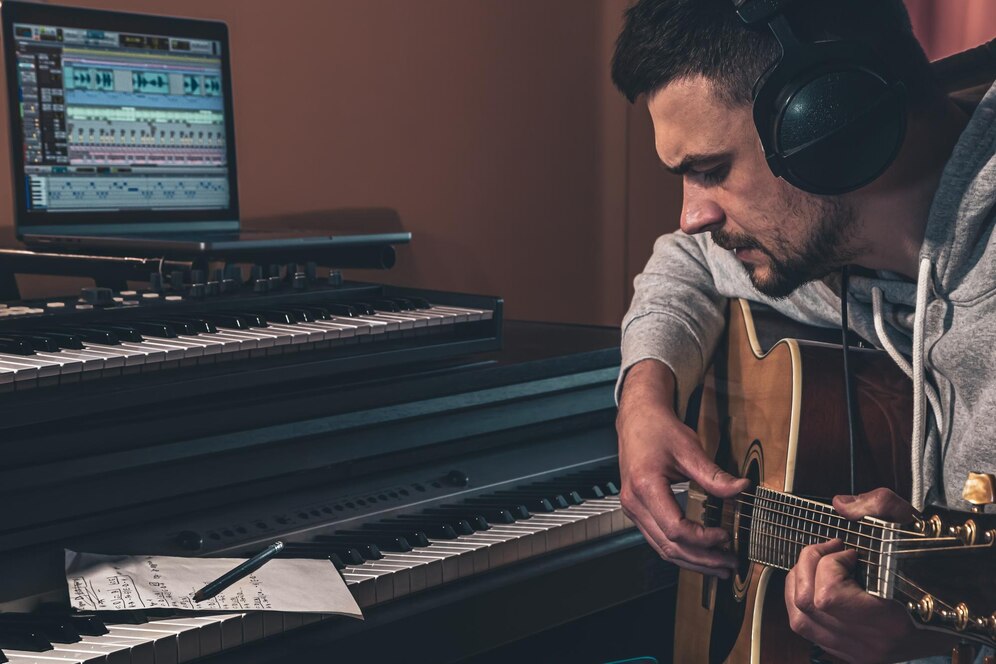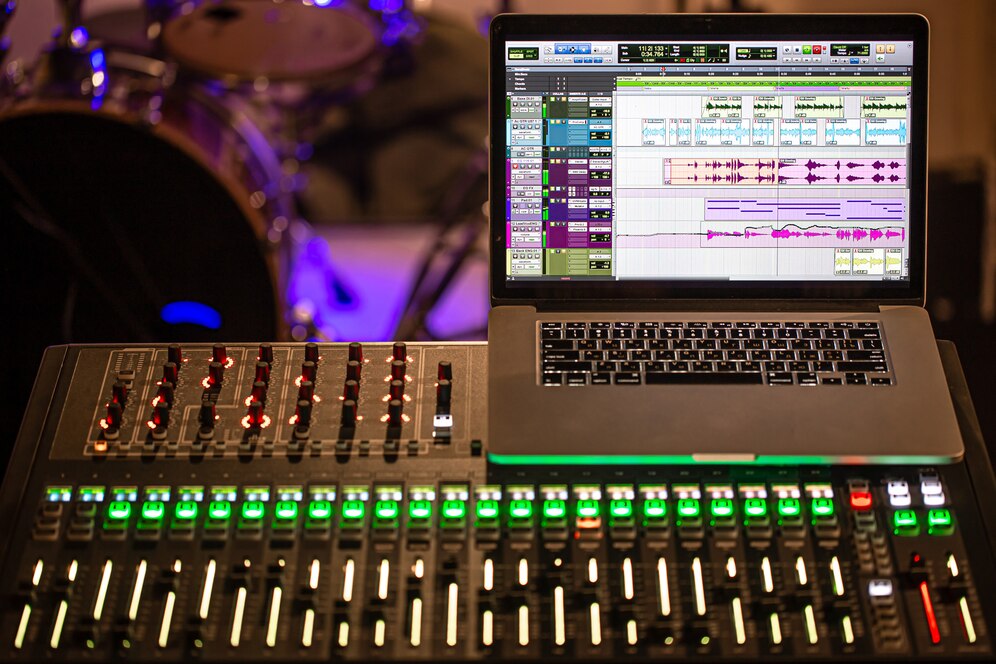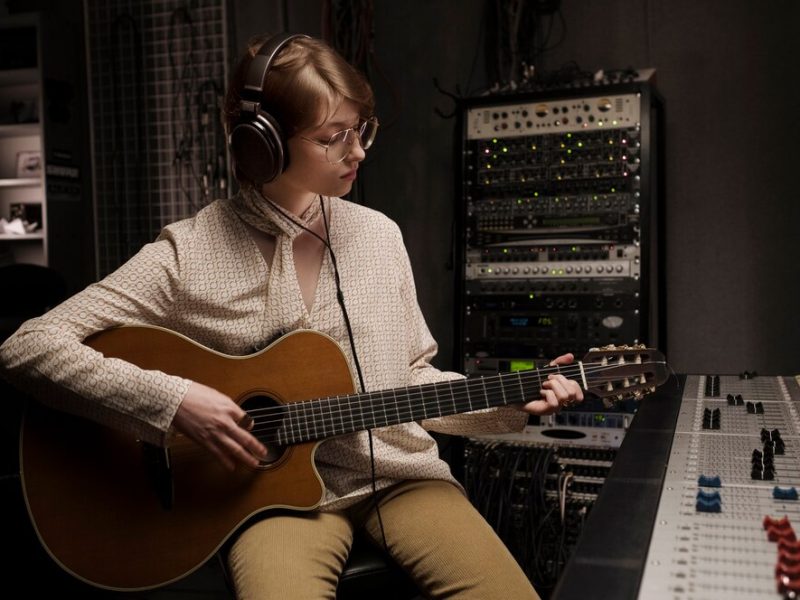Creating depth in a mix is a vital component of music production, transforming one-dimensional tracks into three dimensional sonic landscapes. It is the process of arranging various elements in a mix in such a way that they appear close or far away from the listener, hence creating the illusion of physical depth and distance.
The Potential of EQ in Creating Depth in a Mix
Equalization (EQ) is a powerful tool to create depth. EQ allows us to adjust the high frequencies and the low end of your mix. This frequency manipulation is a significant part of adding depth to your mix. High frequencies are usually perceived as more forward, while the low end tends to recede, giving the impression that the sounds are farther away. It’s a great way to accentuate the presence of the lead vocal, pushing it forward, and making other elements feel like they’re taking a backseat. For instance, cutting some high end of reverb tails will make them feel more distant.
Creating a Lifelike Mix through Reverb and Delay Strategies
Reverb and delay strategies are discerning methods when creating depth in a mix. Strategically use reverb to simulate acoustic space, tricking our ears into perceiving depth and distance. Spaces with early reflections are perceived as closer, while a high density of reflections can move a sound source further back into the mix. Adjusting the decay time of the reverb according to the acoustic space you want to mimic, making sounds seem closer or far away.
The delay is equally important, the longer the delay, the further the sound appears. Importantly, pay attention to the signal’s original sound and the delayed one as they interact and either enhance or decrease the perception of depth.
Unleashing Mix Depth via Contrast Techniques
Contrast is an effective tool to unleash the potential of your mix depth. The divergence between high end and low frequencies, wet and dry content, and even left right panning, contributes to creating an engaging mix with depth. When used meticulously, these contrast techniques can provide a solid three dimensional feeling, making elements pop out or sink in the mix, creating a sense of movement making things sound lifelike.
The Role of Volume in Enhancing Mix Depth
Volume manipulation is an underappreciated and powerful tool for adding depth to a mix. It can be used directly to affect the perception of depth, with louder sounds tending to feel closer and softer ones appearing pushed back or farther away. Thus, subtle volume adjustments can have a great impact on your mix, delivering an appealing three dimensional perceptive experience. So make sure you experiment with those faders!
Avoiding Over-compression to Maintain Sound Depth
Over-compression can life out of your mix and ruin depth. Compression when used correctly is a fantastic tool to control the dynamic range. It helps maintain a balance between the loudest and softest parts of your mix, preventing any part from becoming overwhelming. However, too much compression can reduce the audio’s dynamic range, resulting in a flat, less detailed sound. It’s a perfect balance between preserving original dynamic and achieving desired leveling.
Leveraging Transient Shaping to Boost Depth in Your Mix
Transient shaping is a potent tool to augment mix depth. Transients are the high-energy, short-duration sounds at the beginning of a waveform. Successfully managing transients, like those found in a kick drum or a snare, can directly improve the perceived depth of a mix. A slow attack allows more of the initial transient through, which makes a sound source appear closer. On the other hand, lengthening the sustain can send a sound source farther into the mix.
Mix Balance: The Core Element of Sound Depth
Achieving a well-balanced mix is crucial for creating depth in your mix. Every instrument, vocal, and sound element needs to have its place, and this is where balance comes in. The sound stage’s left to right balance, implemented by panning, is just as important as the front to back balance, achieved by adjusting levels and equalization. Mix balance allows you to manage competition for the listener’s attention, making sure each element has its moment to shine, leading to a satisfying listening experience.
The Use of Compression for Achieving Sonic Contrast
Besides dynamic control, compression can also be used to achieve sonic contrast, which enhances the sense of depth in a mix. By adjusting attack and release times, you can shape the transients and create depth. A setting with a fast attack and slow release time will push elements farther back in the mix, while the opposite settings of a slow attack and fast release makes elements appear closer.
The Power of Dynamics in a Depth-driven Mix
Dynamics contributes to the depth in a mix by providing variations in the music’s intensity. This constant ebb and flow supplied by dynamics adds another dimension to your mix, further building a vivid, three dimensional environment. During the music production process, attending to dynamics, alongside EQ, volume, and time-based effects add appropriate layers of depth to your mix.
Effective Frequency Manipulation for Improved Mix Depth
Using EQ, you can manipulate frequencies to carve out a space for each element in a mix. This includes boosting or cutting specific frequencies to sit each component in its own space. Low frequencies tend to add weight, while high frequencies add brightness and energy. Balancing these energies can enhance your mix’s depth and coherence, ensuring that each element can be perceptive with clarity.
Distortion, Saturation, and Emulation: Vital Components in Obtaining Depth
Distortion, saturation, and emulation are not expressly about depth, but they can contribute significantly in that direction. These elements can add character, excitement, involve a surprising amount of ‘depth-oriented’ considerations. By adding harmonic content to sounds, saturation can make subtle elements more visible, while distortion can make things sound more aggressive.

The Practicality of Mono and Wide Sounds in Achieving Depth
The interplay between mono and wide sounds creates a panoramic dimension, contributing to the sense of depth. Wide sounds feel more distant and encompassing, while mono sounds cut through the mix for a closer, more direct feel. Panning also plays a role here, moving elements off-center to free up the middle for prominent elements can shift the front-back perspective making things feel closer or far away.
Familiarize with Effective Mixing and Mastering Strategies for Optimum Depth
Familiarising yourself with the different mix techniques, tools, and how to effectively use them to bring your mix to life is of primary importance. This includes appropriately using EQ, dynamic range control, panning, balancing the stereo field, and other effects. All these contribute towards the achievement of a professional level of mix depth, characterizing a well-plotted mix capable of truly engaging its audience.
Master Your Mix: Achieving Professional Levels of Depth
Proper mix mastering will help you achieve superior levels of depth. This entails understanding and effectively utilizing all available tools, from EQ to reverbs, delays, dynamic processing, and harmonic exciters. Employing these tactfully can result in a mix that not only has depth but is also well balanced and sonically interesting, thus engaging for the listeners.
Real Time Mix Depth Improvements: Tips and Tricks
Here are some quick tips and tricks for on-the-go mix depth improvement:
- Use EQ to give a sense of distance to instruments
- Use reverb and delay to create an illusion of space
- Maintain variety in your mix with the help of dynamics
- Use panning and volume balance to create a sense of space
- Avoid overusing any effects as it can lead to a cluttered mix.
In conclusion, creating depth in a mix involves balancing multiple elements. It’s about making careful decisions that contribute to a more engaging and realistic sounding mix. Remember, practice makes perfect! So, keep experimenting and tweaking until you feel confident in your mix depth mastery.


